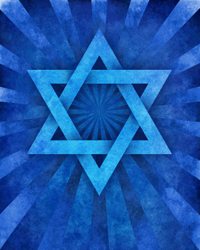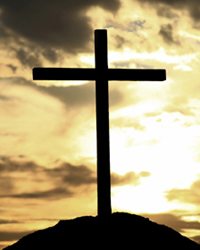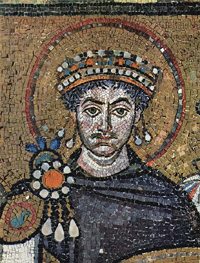Article by: Walter Semkiw, MD, from Born Again and Return of the Revolutionaries
Jesus & Reincarnation
 In the New Testament, Jews are depicted as expecting the reincarnation of their great prophets. Indeed, these prophets were already thought to have reincarnated in times past. For example, the Jewish sect called the Samarians believed Adam reincarnated as Noah, then as Abraham, then Moses. (1)
In the New Testament, Jews are depicted as expecting the reincarnation of their great prophets. Indeed, these prophets were already thought to have reincarnated in times past. For example, the Jewish sect called the Samarians believed Adam reincarnated as Noah, then as Abraham, then Moses. (1)
Reincarnation of the old prophets was also on the minds of Jews at the time of Jesus. In fact, followers of Jesus thought that he was a reincarnated prophet. Let us reflect on the following passage from the Gospel of Matthew:
“When Jesus came into coasts of Cesarea Philippi, he asked disciples, saying, ‘Whom do men say I, the Son of man, am?’ And they said, ‘Some say that thou art John the Baptist, some, Elias; and others, Jeremias, or one of the prophets.’” (Matthew 16:13–4)
Herod, who was in command of Jerusalem under the Romans, also speculated who Jesus may have previously been. Herod also thought Jesus might have been one of the old prophets.
When Jesus announced that he was the Jewish Messiah, his followers became confused, as the scriptures stated the prophet Elias (or Elijah in Greek) would return and precede the coming of the Messiah. The disciples put this apparent discrepancy to Jesus. The disciples pointed out:
“Why then say the scribes that Elias must come first. And Jesus answered and said unto them, Elias truly shall first come, and restore all things. But I say unto you, That Elias is come already, and they knew him not. . . . Then the disciples understood that he spake unto them of John the Baptist.” (Matthew 17:9–13)
In another section of the New Testament, Jesus unequivocally states that John the Baptist is the reincarnation of the prophet Elias: “Among them that are born of women there hath not risen a greater than John the Baptist. . . . And if ye will receive it, this is Elias. . . . He that hath ears to hear, let him hear.” (Matthew 11:11–15)
Reincarnation is alluded to in a section of the New Testament in which the disciples ask Jesus why a man was born blind. The disciples asked,
“Which did sin, this man or his parents?” (John 9:34)
This passage implies that the blind man had a previous incarnation where he had the opportunity to commit a sin that would result in the karmic consequence of blindness. Without the premise of reincarnation, how could the blind man commit a sin responsible for his handicap, as the man was blind from birth? Jesus didn’t dispute the reasoning of the disciples, though he stated that the blindness was due to other factors.
Reincarnation and the Early Christian Church Fathers
 In addition to these citations from the New Testament, evidence shows that reincarnation was part of the Church’s early doctrine and was promoted by Church Fathers, writers who established Christian doctrine prior to the eighth century and whose works were used to disseminate Christian ideas to populations of the Roman Empire. To be considered a Church Father one had to meet the following criteria. One had to lead a holy life;, one’s writings had do be free of doctrinal error; one’s interpretation of Christian doctrine was deemed to be exemplary; and one’s writings had to have approval of the Church.
In addition to these citations from the New Testament, evidence shows that reincarnation was part of the Church’s early doctrine and was promoted by Church Fathers, writers who established Christian doctrine prior to the eighth century and whose works were used to disseminate Christian ideas to populations of the Roman Empire. To be considered a Church Father one had to meet the following criteria. One had to lead a holy life;, one’s writings had do be free of doctrinal error; one’s interpretation of Christian doctrine was deemed to be exemplary; and one’s writings had to have approval of the Church.
A number of Christian Church Fathers believed in and wrote about reincarnation:
St. Justin Martyr (100–165 A.D.) expressly stated that the soul inhabits more than one human body. (2)
Origen (185–254 A.D.), who was considered by St. Jerome as “the greatest teacher of the Church after the Apostles,” defended the idea that the soul exists before the body, fundamental to the concept of reincarnation. (3)
Another Church Father, St. Gregory, Bishop of Nyssa (257–332 A.D.), wrote: “It is absolutely necessary that the soul should be healed and purified, and if this does not take place during its life on earth it must be accomplished in future lives. . . . The soul . . . is immaterial and invisible in nature, it at one time puts off one body . . . and exchanges it for a second.” (4)
St. Gregory also wrote: “Every soul comes into this world strengthened by the victories or weakened by the defeats of its previous life.” (5)
St. Augustine (354–430 A.D.), one of the greatest theologians of the Christian church, speculated that philosopher Plotinus was the reincarnation of Plato. St. Augustine wrote: “The message of Plato . . . now shines forth mainly in Plotinus, a Platonist so like his master that one would think . . . that Plato is born again in Plotinus.” (6)
Other Church Fathers who demonstrated a belief in reincarnation included Synesius (the Bishop of Ptolemais), St. Ambrose, Pope Gregory I, Jerome, St. Athanasius, St. Basil, St. John Chrysostom, St. Gregory of Nazianzus, and Clement of Alexandria. (7)
How Reincarnation was Removed from Christian Doctrine
 If the belief in the pre-existence of souls and reincarnation was prominent in the early Christian Church, why is it not present in contemporary doctrine?
If the belief in the pre-existence of souls and reincarnation was prominent in the early Christian Church, why is it not present in contemporary doctrine?
The reason is that a Roman Emperor named Justinian made arrangements for reincarnation to be removed from official Church doctrine in 553 A.D.
In the early centuries of the Christian Church, disputes over doctrine were settled by bishops of the Church, through meetings called Ecumenical Councils. These Councils were major gatherings, which occurred infrequently, sometimes once in a hundred years. To understand the story of reincarnation and the Christian Church, we must go back in time to the year 330 A.D.
In that year, Constantine the Great moved the capital of the Roman Empire from Rome to Constantinople, a city which today is called Istanbul. As a result, two centers of the Christian Church developed; the Western Church in Rome and the Eastern Church in Constantinople. The emperors of Constantinople controlled the Eastern Church and dictated policy as they pleased.
As an example, the Constantinople Emperor Leo III prohibited images and portraits from being kept in churches, so icons, paintings of saints, which today are so admired for their beauty, had to be removed from places of worship. On the other hand, the Western Church headquartered in Rome refused to give up icons. Similarly, the Constantinople Emperor Justinian determined Church policy regarding reincarnation.
In the sixth century, the Church was divided over the issue of reincarnation. Western bishops in Rome believed in pre-existence of the soul while Eastern bishops were opposed to it. Emperor Justinian, who controlled the Eastern Church, was against the doctrine of reincarnation. As an example of his interference in Church matters, Justinian excommunicated the Church Father Origen, who openly supported the idea of reincarnation.
To further his agenda, Justinian convened the Fifth Ecumenical Council in 553 A.D., with only six bishops of the Western Church in attendance. On the other hand, 159 bishops of the Eastern Church, which Justinian controlled, were present. An image of Justinian is provided to the right.
It was at this meeting that pre-existence of the soul was voted out of Church doctrine. Emperor Justinian manipulated Church doctrine by stacking the voting deck in his favor.
Pope Vigilius protested this turn of events and demanded equal representation between Eastern and Western bishops. Though the Pope was present in Constantinople at the time of the Fifth Ecumenical Council, he boycotted the Council in protest. Justinian not only ignored Pope Vigilius, but persecuted him.
The Catholic Encyclopedia states that the conflict between the Emperor Justinian and the Pope was so extreme that the Pope suffered many indignities at the hands of the emperor and was almost killed.
Can you conceive today that a politician or head of state could dictate church policy to the Pope or that the Pope would boycott the biggest meeting at the Vatican in a hundred years? Yet this is what happened.
As a result, the Catholic Encyclopedia states, the Council called by Justinian was not a true Ecumenical Council, so the removal of pre-existence of the soul as a Church doctrine should not be considered an actual decree of the Ecumenical Council. (8, 9)
The Split of the Roman Catholic & Greek Orthodox Christianity-Branches of the Christian Church Excommunicate One Another
The rift between the Eastern and Western Church increased in 1054 when the two branches of the Christian Church excommunicated each other. When Christian Crusaders from the Western Church were on their way to capture Jerusalem from the Muslims, they made a point to raze the Christian city of Constantinople. In other words, the Western Christian Church waged war against the Eastern Christian Church.
Following that episode, a permanent split occurred and the Western Church became the Roman Catholic Church, while the Eastern Orthodox Church went its own way. Even today, members of the Eastern Christian Church do not consider the Pope in Rome as their leader. So we see that the political fragmentation within the Eastern and Western branches of the Christian Church is as real today as it was in the time of Emperor Justinian and Pope Vigilius.
The Christian Inquisition, Salem Witch Trials & Psychic Abilities
In addition to Christian leaders fighting among themselves, there are disturbing examples of Christians fighting with those opposed to their doctrines.
The Inquisition was established by a series of Papal decrees between 1227 and 1235 to confront dissident religious movements. In this effort, Pope Innocent IV authorized the use of torture in 1252. Later, the persecution of presumed witches in Europe between 1450 and 1700 arose as orthodox Christianity went through its anxieties resulting from Martin Luther’s Reformation and the emerging scientific paradigm.
The Papal decree Summis Desiderantes, issued by Pope Innocent VIII in 1484, stimulated another wave of torture and executions. This Papal dissertation was anti-feminine and condemned witches. Thousands of innocent women were executed based on confessions obtained through torture.
The last outbreak of this persecution occurred in Salem, Massachusetts, in 1692. Twenty women were executed after a group of young girls became emotional or hysterical while playing at magic. In reality, some of those considered witches in the past may have been girls who had psychic gifts but who were perceived as dangerous by those who were not similarly talented. Today, many women who participate in classes designed to stimulate intuition and psychic abilities remember past lives in which they were persecuted and burned at the stake. It can be dangerous to be an evolved being in a relatively primitive world.
Christian Church Doctrine and the Suppression of Reincarnation
 In sum, reincarnation has appeared in Christian church doctrine, but reincarnation as been suppressed in the contemporary Church’s philosophy. One reason is that if reincarnation is acknowledged and research demonstrates that souls can change religion from one incarnation to another, a religion’s claim to exclusive truth is negated.
In sum, reincarnation has appeared in Christian church doctrine, but reincarnation as been suppressed in the contemporary Church’s philosophy. One reason is that if reincarnation is acknowledged and research demonstrates that souls can change religion from one incarnation to another, a religion’s claim to exclusive truth is negated.
Still, evidence of reincarnation can help fulfill one of Christianity’s greatest doctrines, that we are indeed brothers and sisters, and that we should love one another as such.
Footnotes